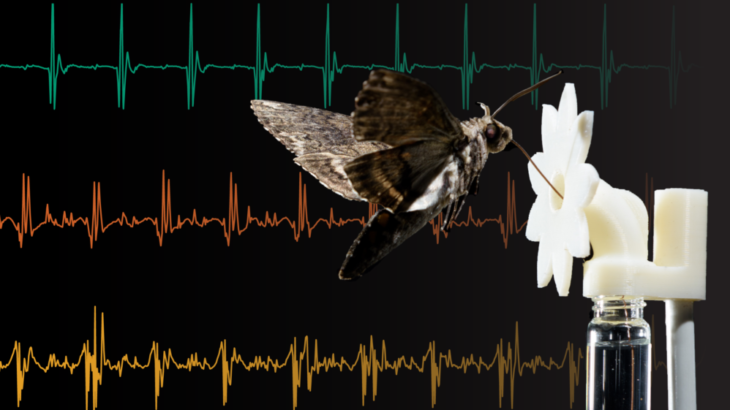Animals perform a plethora of robust, agile movements in natural environments by actuating and coordinating many muscles. However, the nervous system has a limited set of signals—action potentials in motor neurons—to control and execute these movements. Hawk moths use an especially sparse set of motor commands, with only 10 muscles controlling all wing movements, and one or very few motor units per muscle yet they are still capable of complex movements. How do they encode all the information necessary for flight across this motor program? We recorded EMGs from all 10 muscles while simultaneously measuring the forces and torques it produced as it tracked an oscillating robotic flower in tethered flight. We used an information theoretic analysis to separate information encoded in the number of spikes within each wing stroke (spike count information) and the timing of those spikes (spike timing information). We found that all muscles in the motor program used more spike timing information than spike count information, and that the ratio of spike count to spike timing information was consistent for all muscles that had multiple spikes within a wing stroke. Finally, we investigated how encoded information was shared across muscles and found that nearly all information for coordination was encoded in spike timing. This shows the importance of spike timing for movement and coordination, and that the nervous system appears to be encoding information consistently regardless of muscle function.
